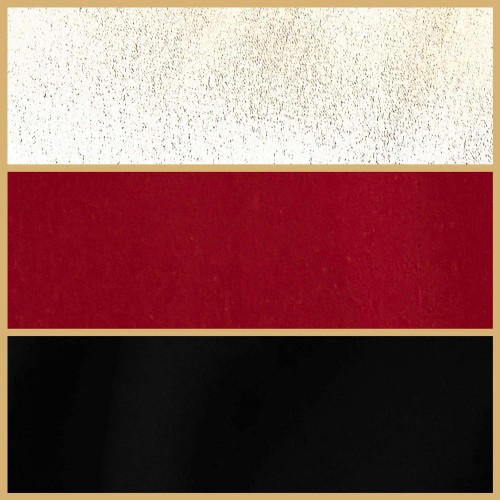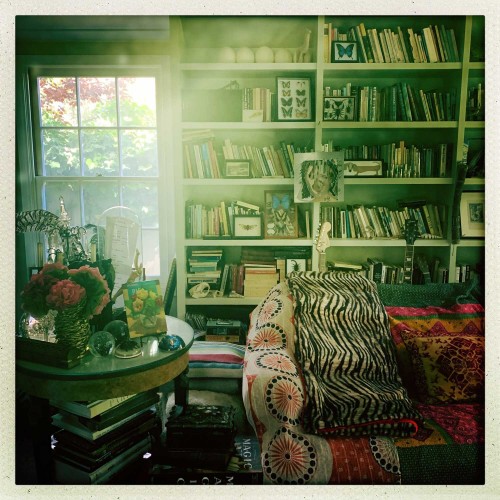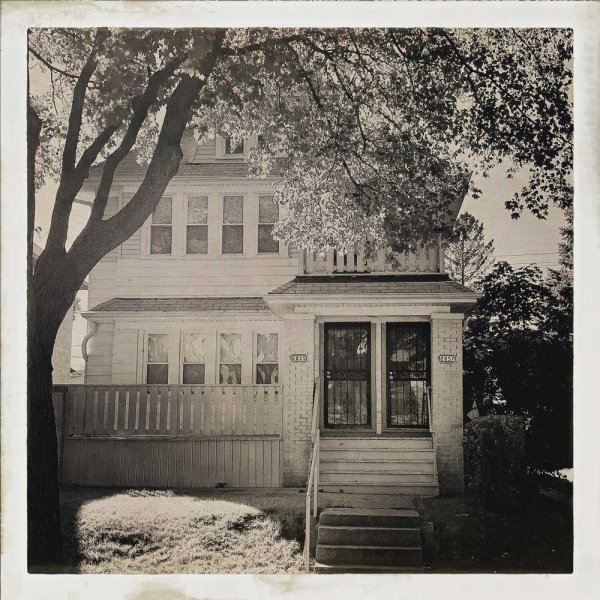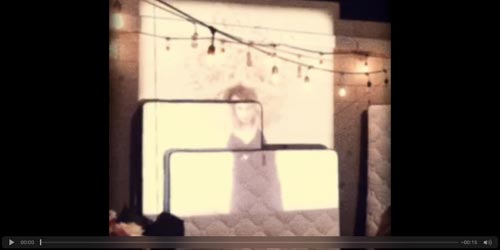BEFORE THIS THERE WAS SOMETHING

MEMORIES OF PLACES I’VE NEVER BEEN
 In “Memories of Places I Have Never Been,” Jill Goldman attempts to tell the story of her father, to construct a coherent narrative of his life and his death. This much is certain: In 1971, when she was nine years old, Goldman found her father dead in his bed. It was August 23, his mother’s birthday. He had apparently shot himself in the head. An ambulance came and took him away. That night for dinner, she ate a baked potato and peas.
In “Memories of Places I Have Never Been,” Jill Goldman attempts to tell the story of her father, to construct a coherent narrative of his life and his death. This much is certain: In 1971, when she was nine years old, Goldman found her father dead in his bed. It was August 23, his mother’s birthday. He had apparently shot himself in the head. An ambulance came and took him away. That night for dinner, she ate a baked potato and peas.
For almost five decades, Goldman lived with this barest of outlines. Shortly after we met as students in Paris in the early 80s, she told me about her father’s suicide in a remarkably blasé tone. Jill was a brilliant, curious and intense student who could expound on everything from Madonna to Julia Kristeva in passionate and hyper-animated discourses and “blasé” was not an adjective typically used to describe her. Yet, she spoke of this.
INVESTIGATION
 In the winter of 2019, I was the artist in residence at Arcane Space. I was already deeply involved in the investigation of the life and death of my father, who died by suicide in 1971 when I was 9 years old. Determined to unravel the mystery of his death, I interviewed people who knew him, looked at old photographs and sorted through boxes of memorabilia my mother and sister had saved. The gallery became my own creative crime lab. I covered its walls with the evidence I collected, constructing an enormous crime board that connected people and events. I later found out that this process is called “link analysis” which, significantly for this moment, is also used by the CDC to track epidemics. In the end, however, my attempts to track my father’s story were futile and his death remains shrouded in mystery.
In the winter of 2019, I was the artist in residence at Arcane Space. I was already deeply involved in the investigation of the life and death of my father, who died by suicide in 1971 when I was 9 years old. Determined to unravel the mystery of his death, I interviewed people who knew him, looked at old photographs and sorted through boxes of memorabilia my mother and sister had saved. The gallery became my own creative crime lab. I covered its walls with the evidence I collected, constructing an enormous crime board that connected people and events. I later found out that this process is called “link analysis” which, significantly for this moment, is also used by the CDC to track epidemics. In the end, however, my attempts to track my father’s story were futile and his death remains shrouded in mystery.
“Unlike the Nordic noir television shows that the artist likes to watch, with their reassuring narratives that establish law and order in a chaotic world, Goldman’s board does not solve the crime. Newspaper clippings, congressional reports, photographs of showgirls and mobsters are crisscrossed with insistent red lines, each convoluted network manically mapping out potential storylines that only trouble the truth by leading in too many directions.”
ARTIFACTS

“Objects that belonged to the dead tell stories and can function as talismans for the living. They have almost magical powers to resurrect a presence from the overwhelming absence. Even the most mundane belongings can transform into religious relics, capable of miraculously healing our wounds. Yet, the artifacts represented here remain oddly insentient, immune to enchantment.”
PLACES
“In what the artist aptly calls a ‘reverse Proustian exercise,’ she tried to create memories she never had by visiting places she had never been. These mournful and arresting photographs of empty lots and swimming pools, of houses now occupied by invisible strangers belie their purported function as illustrations of a life. Instead of prompting a story à la Proust’s Madeleine, one that would create connection to her father, these images are defiantly devoid of any paternal trace, remarkable for their beautiful and eerie emptiness.”
“These moving images of Goldman walking alone, of long stretches of flat highways and fields, of nondescript architecture, of the artist laying flowers on her dead father’s dead mother’s grave reveal everything about the futility of her quest, and nothing about the father she’s searching for.”
“’The Letter,’ in which Goldman reads her father’s suicide note for the first time, is the most poignant, elegiac, and emotionally fraught piece in the show. It includes recently found footage of the nine-year-old Jill directing herself in a movie, filmed in her psychoanalyst’s office, a film that is a deeply unnerving drama of identity and loss.”

“In ‘Black, Red, White,’ the adult Jill Goldman directs herself in another film. This time it’s a video that symbolically acknowledges her failure to give her father’s death a coherent narrative, but also depicts her triumph over this loss in a resurrection, not of her father, but of herself.”
-JILL GOLDMAN
FORT DA

Fort/Da, Jill Goldman’s first art installation, reprises characters that have long preoccupied her, and revisits places from her past, facilitating encounters with women who are escaping or transcending the commonplace through imaginary leaps. Inspired by Virginia Woolf’s Clarissa Dalloway, Goldman seeks out the extraordinary, elevating the everyday to holiday, enabling women – through both the lens of her camera and the amplitude of her imagination – to be narratively construed.Having reached a time in life when her children are grown, Goldman experiences and expresses both the freedom of being unmoored, and the mourning that comes with no longer being anchored in the way she once was. The pieces are thus a commingling of mourning one’s past identity and the unmoored-ness of the vast expanses that lie ahead. Turning toward the lives of other women, Goldman takes liberties with their stories, whilst remaining faithful to the integrity of their singularity, feeding her viewer possibilities yet always respecting the mystery of the Other, that whom we do not and cannot know. The posed photographs of women on hotel bedspreads, the invented stories of the women in daugeratypes, and the images of the Dancing Fool represent an antidote to the often isolating and claustrophobic aspect of the lives of those who are homemakers, whether by necessity or election.
In this installation, we see Goldman retreading Clarissa Dalloway’s footsteps with maps that don’t make sense, inventing stories of women’s lives that are true because she has inhabited them. In so doing, she locates the lives of others in the fertile in-between-ness of reality and fantasy. Out on her own at last, Goldman links herself to other women. The resonance and relevance of the piece is in the very fact of her calling upon women, past and present, real and imagined, to guide and join her in creating an imaginary that holds the promise of possibility. In this way, she rejects and disavows nothing. Her project is inquiry, a feeling around that could only be done by her now, in this in-between stage of her life. The dance is the animating element, a loosening of life’s constrictions, opening into adventure, possibility. The radical truth of Goldman’s vision is precisely that while a woman is reveling in freedom, she is also feeling around for the borders.
Goldman is involved in an endeavor that concerns elevating and thus escaping from the predictability of daily life. This may be accomplished by hosting or attending a party, reclining on a hotel bedspread, taking a walk to buy flowers; even putting on make up can be transformative. Once, many years ago at Bennington, I lay on Jill’s white bed, watching her dress up. She was standing at the mirror putting on makeup. Startled by the transformation I witnessed, I asked, “do you think maybe you have too much make up on?” Undaunted, she put on red lipstick, smacked her lips, turned to me, smiled, and said, “no; I look great!” I have long remembered that moment because she seemed so assured, not trying to look natural, but at ease in festivity, and in expectation. She had a look of excitement entirely alien to me, as if she were on the brink of something. There is humility in Goldman’s grandiosity, an openness to the lived experience of every woman’s existence and the possibility of every woman’s holiday. No narrative lasts forever, no identity defies impermanence. We are not granted infinite possibilities for living, but the possibilities for that which we can fathom are endless. The thread that runs through Goldman’s work is that of imaginative hospitality: “What is your story?” she asks, again and again, of herself, and of us.
– Robin Flicker
THE INSTALLATION
22, boulevard Flandrin
a recreation, reinvention, re-presentation, re-imagination of the artist’s apartment in Paris.
[Not a valid template]Some Women Not Related to Me
original nineteenth-century photographs of women who got dressed up to have their pictures taken. 1.Daguerreotypes 2. Tintypes3. Cartes de Visites 4.Cabinet cards
[Not a valid template]Women on Bedspreads
a series of 49 photographs taken between 2015 and 2018. Goldman felt compelled to photograph, women, her female friends and family members on bedspreads.
[Not a valid template]22, Boulevard Flandrin 75016 Paris
a series of 7 photographs. Goldman returned to the apartment where she lived but didn’t get in.
[Not a valid template]Chateau Marmont
a series of 6 photographs. Goldman went to take pictures of women on bedspreads at the Chateau Marmont. The beds don’t have bedspreads.
[Not a valid template]Filmworks
Excerpts from selected works directed by Jill Goldman.
Night in the City, 1987, super 8, black and white;
fort/da, 1987, 16 mm, color;
Holding Margie’s Hand, 1988, 16 mm, black and white;
Blues for Sister Someone, Lenny Kravitz music video, 16mm black and white; Sally Goes Shopping, 2004, video color.
Places/Spaces Between – 1985 super 8 color.
Jill Goes to Paris, Almost – 1988 video.
Dancin’ Fool, 2018, iPhone Cinematic video.
FORT/DA PERFORMANCE (2019)
22, boulevard Flandrin
PERFORMERS
Asti Hustvedt as woman on sofa
Lauren Strogoff as woman on bed
Louise Hamagami as woman arranging flowers
Roxanne Steinberg & Morleigh Steinberg as women rehearsing
The Perfect Hostess
PERFORMERS
Jill Goldman & Vicki Kennedy as hostesses
Asti Hustvedt & Veronica as parlor game players
Morleigh Steinberg & Roxanne Steinberg as perfect hostesses
Jill Goldman, Veronica & Louise Hamagami as imperfect hostesses
DANCIN’ FOOL (2018)
Directed By: Jill Goldman
JILL GOES TO PARIS, ALMOST (1988)
Directed By: Jill Goldman
PLACES/SPACES BETWEEN (1985)
Directed By: Jill Goldman
super 8 color.
Books
Limited edition numbered and signed series of 100
22 Blvd Flandrin
Mrs Dalloway’s Walk
Some Women Not Related to Me
Women on Bedspreads


